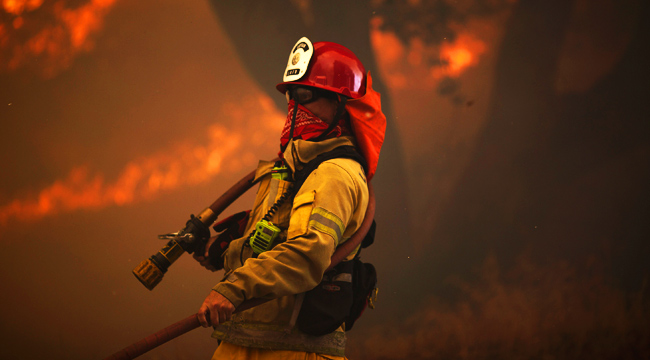
As of this writing, Northern California is facing wildfires that consume a football field’s worth of land every three seconds. At least 17 are dead and there are more and more missing persons reports. But how, even in a region where wildfires are common, did it get this bad, this quickly? A number of factors created the worst conceivable conditions for these fires.
- It starts with the problem of October. Or, as the LA Times puts it, “Santa Ana winds and wildfire warnings? It must be October in Southern California.” California Octobers are warm, dry, and don’t see much rain, parching plants, drying out homes, and laying the groundwork for fires.
- That’s not the only climate concern. California is a windy state at the best of times, and Northern California has the problem of the Diablo Winds, named because they flow off of mountains in the Diablo range. Winds build on mountain peaks and flow down, drying out and compressing as they go, picking up speed. The Diablo have been particularly bad this year, in what local authorities are calling a historic wind event. The Diablos have been hitting hurricane speeds, which can feed even tiny fires and help them spread quickly, and carry embers to other places, starting more fires.
- An unexpected source of fuel: The end of California’s record drought brought out thousands of acres of plants, but a largely rainless summer has meant most of those plants have died. Thus, any fire that starts has no shortage of fuel.
- The type of fire matters: Wildfires and structure fires are two very different types of conflagration, and firefighters are struggling to fight both types to contain the disaster.
- Why are there so many structural fires in the first place? California’s notorious “Drive ‘Til You Qualify’ housing policies pushes homeowners to live in distant places instead of city centers, which means if a wildfire erupts, firefighting units can have major fires miles apart. So far, 2,000 homes and businesses have burned.
- What sparked the fire itself? That remains a mystery, but residents of Sonoma County have reported that they had electrical trouble right before the fires started, casting suspicion on a downed power line. Precisely this scenario unfolded in the region back in April.
Currently, it appears that little relief is in sight. Wednesday is forecast to be another windy day in the area, and the region may not see relief until the weekend. But even when it does, that leaves the longer-term problems. These fires will eventually go out, but the circumstances that ignited them will remain.
(via CNN, LA Times, Wired & East Bay Times)
